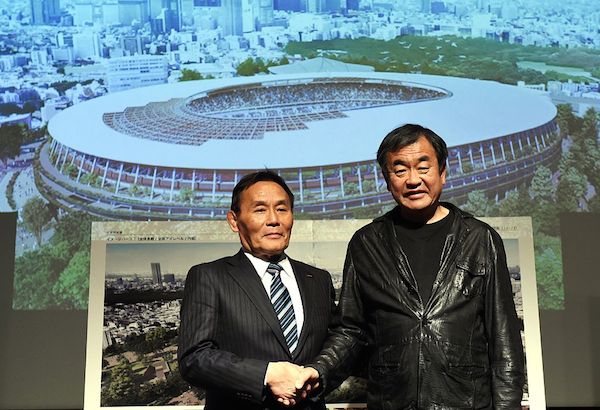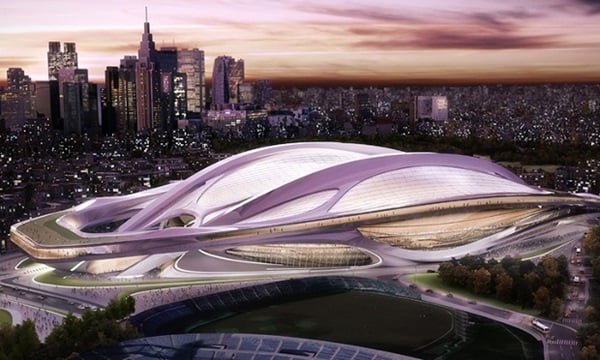People
Japanese Architect Kengo Kuma Denies Copying Zaha Hadid’s Toyko Stadium Design
The controversy surrounding Tokyo’s Olympic stadium rages on.

Photo: TOSHIFUMI KITAMURA/AFP/Getty Images
The controversy surrounding Tokyo’s Olympic stadium rages on.

Amah-Rose Abrams

Zaha Hadid is alleging that the new design for the Tokyo Olympic Stadium has borrowed elements from her original, which was scrapped last year amid much controversy.
The starchitect spoke out following the unveiling of the new design by Japanese architect Kengo Kuma before Christmas. Hadid revealed that her company had rejected an offer from the Japan Sports Council to purchase the copyright of her designs in return for payment of services rendered.
Hadid’s office sent a report to the Japan Sports Council pointing out the similarities in “the structure, layout, and numerous elements” between her and Kuma’s design and is threatening legal action if they do not receive payment or answers regarding their issues regarding the new design, according to the Guardian.

A rendering of the abandoned Zaha Hadid design for the 2020 Tokyo Olympic Stadium.
Photo: Zaha Hadid.
Kuma is denying any accusations of copyright violation and cites the strict guidelines of the original brief from the Japan Sports Council for any superficial similarities between the designs.
“In the design, I would like to say there are no similarities at all,” Kuma said at a press conference last week, reported by the Scotsman. “The conditions set for the competition mean that automatically some similarities emerge,” Kuma explained, adding that “the concept is completely different, so it is absolutely a different building, despite the similarities.”
This is just the latest in a long sequence of problems with the design for the stadium, due for completion in time for the 2020 Olympic Games, which began with Hadid winning the bid for the stadium in 2014, thus beating many Japanese architects in the competition for the coveted project.

Zaha Hadid
Photo: via Wales Online
When her design was publicly unveiled in December 2014 a group of architects, led by older statesman of Japanese architecture Arata Isozaki, released a statement likening her design to a bike helmet and complained that the trademark sweeping curves of Hadid’s design were too futuristic for the area of downtown Tokyo where it was due to be built.
At the time, Isozaki cattily described Hadid’s design as being “a dull, slow form, like a turtle waiting for Japan to sink so that it can swim away.”
Hadid hit back by saying she felt that the Japanese architecture community didn’t like the fact that the contract had been awarded to a foreigner, despite the fact that they themselves frequently work abroad.
The $2.8 billion design was then scrapped by the Japanese Government—citing costs—and a new cap on any future designs of $1.5 billion was put in place. Hadid then joined forces with Japanese architects Nikken Sekkei in an effort to restart the project in July 2015 but the effort was short lived, with Hadid scrapping the renewed bid within days.
Kengo Kuma & Associates were then awarded the new contract and worked with companies who had worked with Hadid on the previous design.
While defending his design last week, Kuma added that he felt that Japan needed to adjust its working practices to make it easier for foreigners to work there.
“I don’t know, as I’ve never worked as a foreigner here,” Kuma stated as reported in the Scotsman. “But from my personal point of view, communicating and holding meetings might be difficult.”
The official design for the logo for the 2020 Olympic games in Tokyo was also subject to plagiarism claims and was subsequently scrapped.